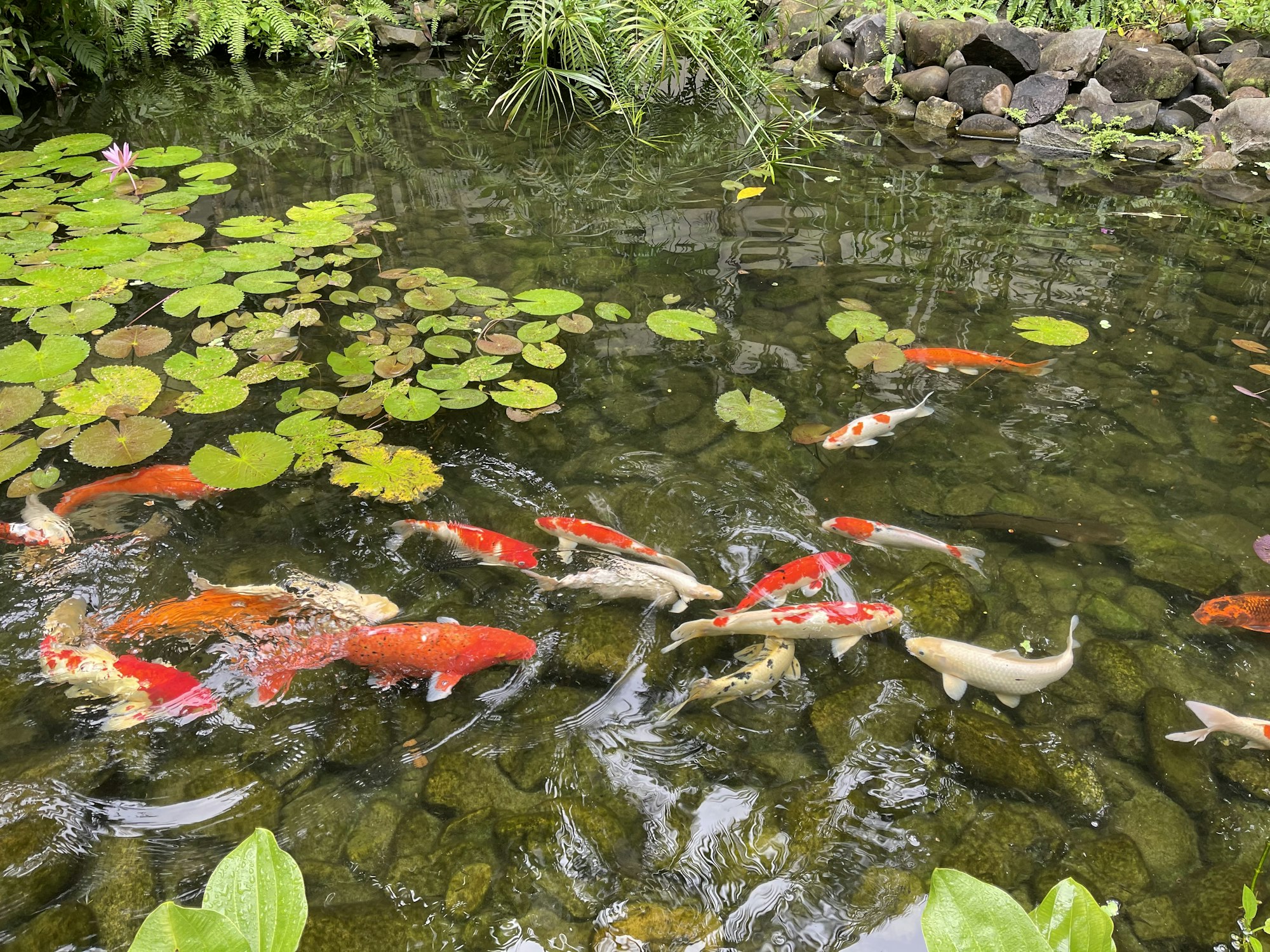How to Design a Sustainable Koi Pond for a Backyard Sanctuary?

Creating an ecosystem in your own backyard can be a rewarding endeavor. Not only does the sound of water create a serene environment, but a pond can also host a variety of wildlife, including koi fish. But building a pond that’s both beautiful and sustainable isn’t an easy task. It requires careful planning, design, and maintenance. In this article, we’ll guide you through the process of setting up a self-sustaining koi pond in your backyard.
Understanding the Basics of a Koi Pond
Before you start digging and filling up your pond, it’s crucial to understand what a koi pond entails. A koi pond is an ecosystem in its own right. It requires a natural balance between the fish, plants, and water to thrive.
Have you seen this : What Are the Best Space-Saving Solutions for a Small Home Wine Collection?
Koi fish, native to East Asia, are hardy creatures that can adapt to different environments. They are typically vibrant in color and create an impressive spectacle swimming against the backdrop of a well-designed pond.
The water in the pond plays a critical role in the ecosystem. It provides a habitat for the koi and nourishes the aquatic plants. It’s vital to ensure the water is clean, well-filtered, and oxygenated for the wellbeing of the pond’s inhabitants.
Also read : What’s the Best Way to Create a Meditation Room with Soundproofing?
Aquatic plants are not just for aesthetics; they offer shelter for the koi, help maintain the water quality by absorbing excess nutrients, and contribute to the pond’s ecosystem.
Choosing the Right Spot for Your Pond
Your backyard may have several potential spots for a pond, but not all of them will be suitable. You need to consider the amount of sunlight the spot gets, its proximity to trees, and how well it blends with the overall design of your garden.
Koi ponds need about four to six hours of sunlight each day. This is sufficient to promote the growth of beneficial algae without overheating the water. Avoid placing the pond where it will receive direct sunlight all day, as this can lead to excessive algae growth, which can harm the pond’s ecosystem.
Being close to trees might seem like a good idea for providing shade, but falling leaves can decay in the water and disrupt the pond’s balance. Additionally, the roots of large trees could potentially damage the pond liner.
Lastly, consider how the pond will fit into your current garden layout. The pond should add to the beauty of your backyard, not stick out like a sore thumb.
Designing Your Pond
Now comes the exciting part – designing your pond. You can go for a natural look that blends with the surroundings or opt for a formal design with clear lines and symmetry. Your choice will largely depend on your personal preferences and the existing layout of your backyard.
Don’t forget to add a waterfall or a fountain for water filtration and aeration. Besides, the sound of flowing water adds a soothing effect to your garden.
Koi ponds need to be deep – at least three feet. This depth is necessary not only to accommodate the koi, that can grow quite large, but also to protect them from predators and harsh winters.
When it comes to selecting plants, opt for a mix of submerged, marginal, and floating plants. Submerged plants oxygenate the water, marginal plants offer shelter for the koi, and floating plants provide shade.
Building and Filling Your Pond
Once you have the design in place, you can start building your pond. Begin by marking the area, then proceed to dig. You will also need to install a pond liner to prevent the water from seeping into the ground.
Next, install the filtration system. A proper filtration system is key for maintaining water quality in the pond. It removes waste, prevents the buildup of harmful substances, and keeps the water oxygenated.
Finally, you can fill the pond with water. But before adding the koi, let the water sit for a few days to allow chlorine and other harmful substances to evaporate. You can also add a few hardy plants during this time to start establishing the ecosystem.
Maintaining Your Pond
Once your koi pond is up and running, regular maintenance is vital to keep it healthy and beautiful. This includes cleaning the filter, checking the water quality, and removing any dead plants or leaves.
Also, monitor the health of your koi. Sick or stressed koi can quickly affect the entire fish population in the pond. Regular feeding and health checks will help in detecting any potential problems early on.
Creating a sustainable koi pond in your backyard involves thoughtful planning, design, and maintenance, but the result is a beautiful, tranquil garden sanctuary that will bring joy for years to come.
Incorporating Native Plants in Your Koi Pond
An important element for a sustainable koi pond is the selection of native aquatic plants. These plants are not only beautiful to look at but also serve vital roles in the pond’s ecosystem. They provide shade, protection, and oxygen for the koi while also maintaining the cleanliness of the pond water.
It’s crucial to choose the right plants that will thrive in your specific climate and coexist harmoniously with your koi. These could include water lilies, cattails, and lotus plants.
Submerged plants are necessary for oxygenating the pond water, providing habitats for beneficial insects, and serving as a food source for your koi. Some popular choices for submerged plants include elodea, anacharis, and hornwort.
Marginal plants, placed at the edges of the pond, offer shelter to the koi and other wildlife while enhancing the natural aesthetics of the pond. Pickerel rush, sweet flag, and iris are excellent marginal plants that work well in koi ponds.
Lastly, floating plants such as water lettuce and duckweed provide shade, which is crucial in controlling algae growth caused by excessive sunlight. They also absorb excess nutrients, maintaining water quality and ensuring a balanced pond ecosystem.
Remember, while native plants are generally eco-friendly and beneficial to your koi pond, some can become invasive if not properly managed. Regular pond maintenance, including trimming and controlling plant growth, will help prevent such issues.
Conclusion: Creating a Wildlife-Friendly, Eco-Friendly Koi Pond
Creating a sustainable, wildlife-friendly koi pond in your backyard is not only rewarding but also contributes to the preservation of local ecosystems. The sound of water flowing, the sight of vibrant koi fish swimming, and the beauty of native aquatic plants can transform your backyard into a peaceful sanctuary.
From the pond design to the building and filling of the pond, every step requires careful planning and consideration. Selecting the right spot, designing your pond to blend with its surroundings, incorporating native plants, and installing an efficient filtration system are all steps towards creating a self-sustaining ecosystem pond.
A sustainable koi pond will not only serve as a home for your koi but will also attract other wildlife, enriching the biodiversity in your backyard. Regular pond maintenance, including water testing, plant management, and fish health checks, is crucial to ensure long-lasting sustainability and enjoyment.
In conclusion, building a koi pond is a thoughtful balancing act between beauty and ecology. With careful planning, patience, and a bit of hard work, you can create a beautiful, eco-friendly water garden that’s not only beneficial to local wildlife but also a tranquil retreat for you to enjoy for many years to come.
